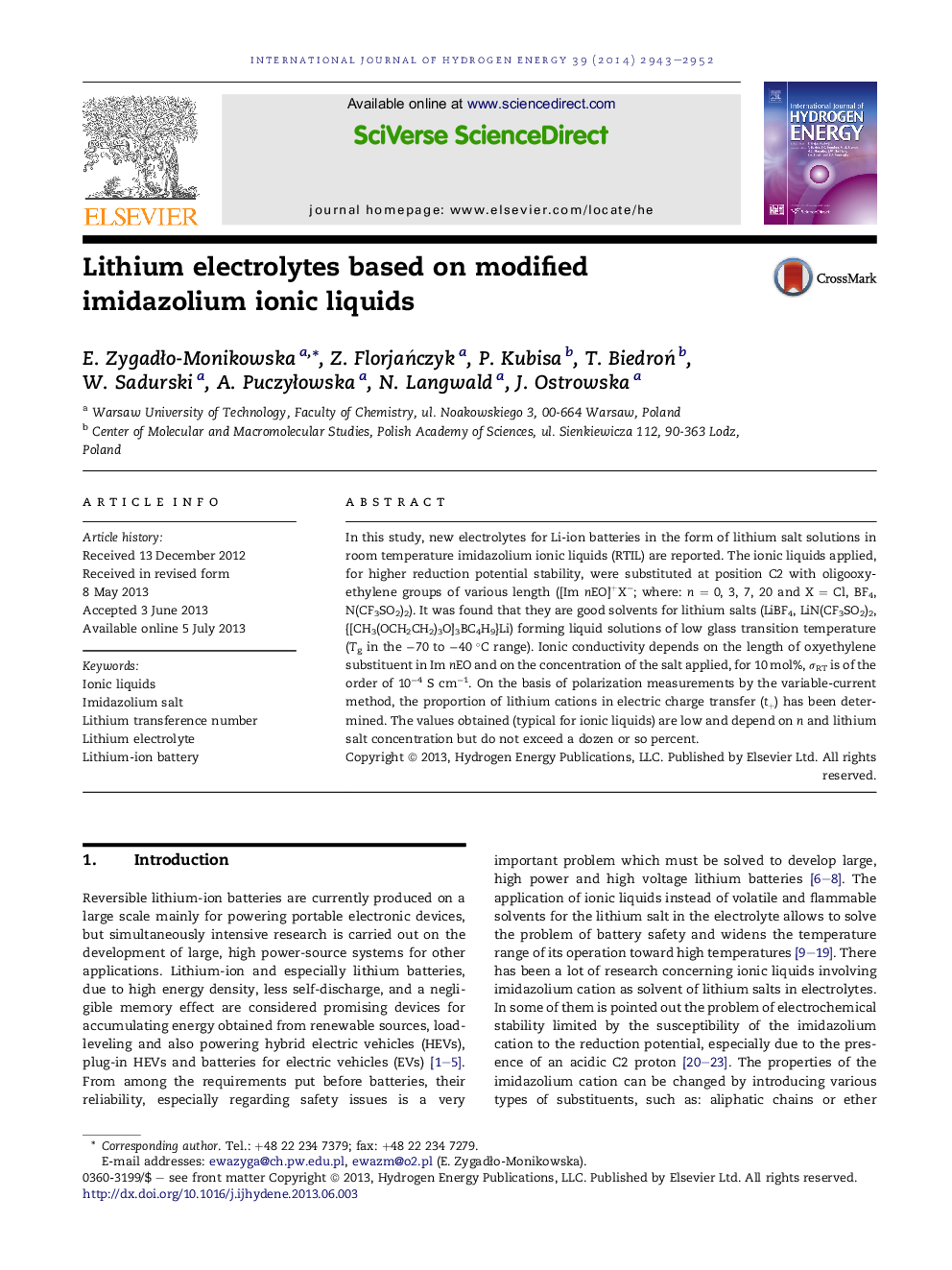| Article ID | Journal | Published Year | Pages | File Type |
|---|---|---|---|---|
| 7720720 | International Journal of Hydrogen Energy | 2014 | 10 Pages |
Abstract
In this study, new electrolytes for Li-ion batteries in the form of lithium salt solutions in room temperature imidazolium ionic liquids (RTIL) are reported. The ionic liquids applied, for higher reduction potential stability, were substituted at position C2 with oligooxyethylene groups of various length ([Im nEO]+Xâ; where: n = 0, 3, 7, 20 and X = Cl, BF4, N(CF3SO2)2). It was found that they are good solvents for lithium salts (LiBF4, LiN(CF3SO2)2, {[CH3(OCH2CH2)3O]3BC4H9}Li) forming liquid solutions of low glass transition temperature (Tg in the â70 to â40 °C range). Ionic conductivity depends on the length of oxyethylene substituent in Im nEO and on the concentration of the salt applied, for 10 mol%, ÏRT is of the order of 10â4 S cmâ1. On the basis of polarization measurements by the variable-current method, the proportion of lithium cations in electric charge transfer (t+) has been determined. The values obtained (typical for ionic liquids) are low and depend on n and lithium salt concentration but do not exceed a dozen or so percent.
Keywords
Related Topics
Physical Sciences and Engineering
Chemistry
Electrochemistry
Authors
E. ZygadÅo-Monikowska, Z. FlorjaÅczyk, P. Kubisa, T. BiedroÅ, W. Sadurski, A. PuczyÅowska, N. Langwald, J. Ostrowska,
